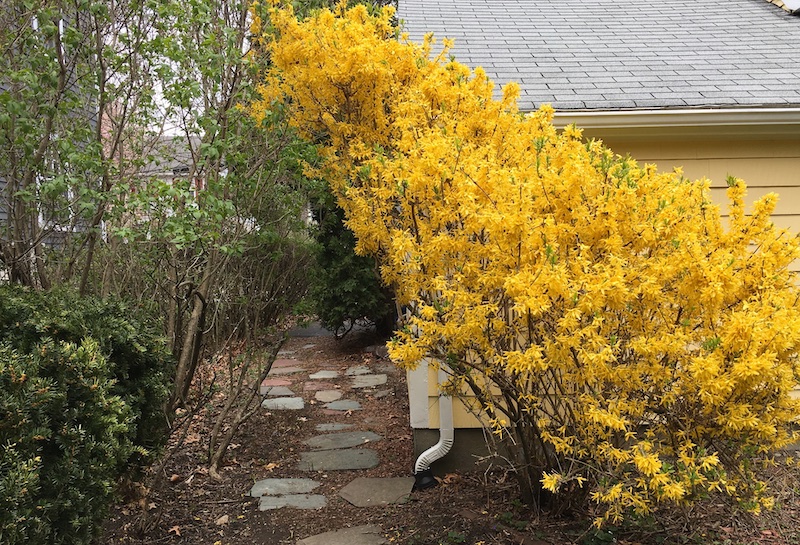Mindfulness of Spring Blossoms
With COVID, constant images of police violence, and a general current of anger running through American society, the world can seem like a depressing place. Voltaire, in Candide, suggested in the end that we tend our own garden. He was offering advice inspired by Stoicism and Buddhism: we have within ourselves the ability to achieve equanimity, or perhaps you might call it serenity, in difficult circumstances. Voltaire’s garden was of course a metaphor, but perhaps you are fortunate enough to have an actual garden, or if not, can enjoy the plantings in your neighborhood and local parks.

Awareness of Blossoms
Whereas meditation is often about focusing on something in particular, mindfulness can be about taking a wider-angle to your environment. But it’s always a good idea, before opening up that wide-angle lens, to start with a meditation, perhaps on the breath. After you’re done, go outside!
Before you even see any blossoms, take a sniff of the air. Notice any fragrance? Perhaps a gust of wind will bring to you the aroma of what’s in bloom. Can you tell where the fragrance is coming from? I once detected lilac from around a corner.
Now take a look around and see if you can spot some color. If you do this over several days, you’ll notice the progression of the blossoms. I remember as a teenager taking walks with my father, and he drew my attention to bushes full of yellow blossoms that he said was one of the first signs of spring. He told me they were forsythia. I’ve now planted a forsythia behind my house.
Over the years I’ve noticed other early bloomers, including bulb plants and magnolia. Where I live, the purple-blossomed rhododendrons come later and white mountain laurel still later than that. The blue hydrangeas are among the latest to bloom.
Notice the stages of the plants, perhaps as green shoots arise out of bare earth put out buds, show a little flower, then burst out into full flower. These then rust and drop petals, to be replaced by green leaves.
Get to know a flower by putting on your gardening jeans and taking a seat next to a plant. Touch the flower lightly. Notice the perhaps velvety texture of the petals. Gently tap on the pistil and stamen at the center of the flower, noticing their stiffness or any give. Run your hand down the stalk of the flower to where it perhaps merges with the rough wood of old growth. Carefully, if there are any thorns, rest a finger ever so lightly against the thorn.
Try doing this with your eyes closed (if the plant lacks thorns). How much of the plant can you visualize in your minds eye just from the feel of it?
The blossoms will disappear, so as the year rolls on, practice bringing this level of affectionate attention to other objects in your environment.
This article originally appeared in Mindful Moderate
